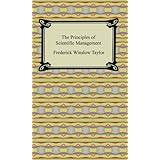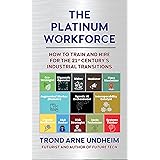The job market constantly evolves. What worked even a few years ago might not be effective today. If you’ve watched the video above, you understand that traditional job search methods often fall short. It’s time to embrace modern job search strategies that deliver real results. We must adapt to a competitive landscape.
This article builds on the expert advice shared. We will dive deeper into five critical areas. These strategies are proven to work in today’s dynamic environment. They will help you find the right role faster. Stop wasting your valuable time. Start working smarter in your job search.
Effective Job Search Strategies: Network Smarter, Not Harder
Networking remains essential for finding a job. But your approach may need refinement. The goal is quality interactions, not just quantity. Sara Camilo, a certified career coach, highlights this. Networking smarter means maximizing every connection opportunity.
Maximize Networking Events
Attending events is a great start. Yet, many people leave too soon. Imagine if you are at a professional mixer. You talk to a few people. You exchange LinkedIn profiles. Then you leave. You might miss valuable opportunities. The video suggests aiming for ten connections. This requires intentional effort. Try to be one of the last people to leave. Critical conversations often happen at the end. Key connections form after the main event. People are more relaxed. Deeper discussions become possible.
Master Cold Outreach and Connection Requests
Reaching out to strangers can feel uncomfortable. However, it is extremely valuable. Target recruiters or hiring managers. Look for individuals at your desired companies. Send them a personalized message. Consider going a level higher. Directors often receive fewer emails. They still hold significant hiring influence. Imagine if your message gets noticed by a director. This could be your direct path to an interview. Your message must be concise. Clearly state your purpose. Show genuine interest in their work or company.
Leverage Webinars and Masterminds
These online events are networking goldmines. Don’t just log off when it ends. Engage actively during the session. Chat with other attendees. Make side connections. Track down names of interesting participants. Follow up with them later. Ask thoughtful questions. Connect with the speakers directly. Many platforms show attendee lists. This makes follow-up easy. Imagine if a simple “What did you think of that webinar?” starts a career-changing conversation.
Connect Before You Apply: A Targeted Company Approach
Blindly submitting applications is inefficient. Change your entire approach. Never apply for a job without a company contact. This drastically increases your visibility. A former colleague or university alum can help. A friend of a friend is also a great resource. Even a LinkedIn connection can make a difference. These relationships get your resume seen. It’s about bypassing initial filters.
Build Your Target Company List
Identify 10 to 15 companies. These should be organizations you admire. They align with your career goals. Add to this list consistently. Search LinkedIn for employees there. Look for recruiters or hiring managers. Find people with your desired job title. Identify those in your target department. This focused effort saves time. It gives your job search direction.
Craft Personalized LinkedIn Messages
When sending a connection request, include a short note. A simple script works wonders. “Hey [Name], I saw your company is hiring for [X role]. I’d love to learn about your experience. Would you be open to connecting?” This direct approach gets attention. It makes your request stand out. Imagine receiving such a note. You are more likely to accept. It shows respect for their time. This personal touch builds rapport. Your resume is now more likely to be reviewed. The right person will see it.
Get Noticed: Daily LinkedIn Engagement
Your name needs to be visible. Think of it like a product advertisement. The more people see it, the more familiar they become. LinkedIn’s algorithm favors consistent engagement. Show up daily. Recruiters and company employees will notice you. This takes time to build momentum. However, the effort is truly worth it.
Engage with Target Company Posts
Follow your 10 to 15 target companies. Comment on their posts daily. Go beyond a simple “Great post.” Offer thoughtful insights. Share your professional opinion. The more your name appears, the better. Imagine a recruiter seeing your name repeatedly. They might check your profile. This increases your chances of being recognized. It builds a positive impression.
Create Your Own Organic Posts
Post at least once a week. Share your thoughts on industry trends. Comment on a recent webinar. Share a relevant article. LinkedIn’s algorithm also loves photos. Post about a professional event. Share a personal learning experience. This gives people a broader view of you. It’s more than just your resume. This shows your personality. It showcases your expertise. Watch your profile analytics grow. More views lead to more job leads. You never know who is watching.
Adapt to the Job Application Process: Craft Recruiter-Friendly Resumes
The job application process is often flawed. Recruiters may screen resumes first. They might not be experts in your field. This is how many companies operate. We must adapt to this reality. Your resume needs to communicate effectively. It must resonate with a generalist recruiter.
Translate Industry Jargon
Many recruiters lack field-specific knowledge. If you work in finance, highlight money saved. Quantify your contributions to profitability. For sales, focus on revenue increases. Mention awards or President’s Club achievements. IT professionals should clarify technical terms. Emphasize impact on automation and accuracy. Imagine your resume is a foreign language. You need to make it understandable to everyone. Avoid overly technical language. Focus on results and business value.
Optimize for Keywords and Skimmability
Recruiters rely on keywords. These come from job descriptions. They also include industry buzzwords. Your resume must feature these prominently. Use bullet points for easy scanning. Recruiters do not read word-for-word. Keep it clear, concise, and simple. Highlight key performance indicators (KPIs). Emphasize quantifiable achievements. Imagine a recruiter scanning your document in seconds. Can they quickly grasp your impact? Make it easy for them to say “yes.”
Look Beyond LinkedIn: Diversify Your Job Search
LinkedIn is a powerful tool. However, it should not be your only resource. Not every company posts all jobs there. Some companies use other platforms. Others use their own career sites. Diversifying your search broadens your reach. This uncovers hidden opportunities.
Explore Niche Job Boards
Research industry-specific job boards. Dice.com for IT roles is one example. SHRM is great for HR positions. Built-in.com focuses on tech startups. Glassdoor offers valuable company insights. Google for Jobs aggregates listings. It pulls from many sources. This efficient tool saves time. Imagine missing out on a perfect role. It was simply on a different platform.
Engage with Professional Communities
Join industry-specific Slack groups. Look for Discord channels. Explore other professional online communities. Job openings are often shared here first. These communities can be fantastic resources. Welcome to the Jungle is another job board option. Set up a profile there. Receive personalized job alerts regularly. These less conventional channels can lead to unique opportunities.
Connect with Specialized Recruiting Agencies
Recruiting agencies can be overwhelmed. Focus on agencies specializing in your industry. Seek out those in your geographic location. Once you connect, set a follow-up cadence. Recruiters get busy. You might fall to the back burner. Proactively schedule check-ins. Suggest reaching out weekly or bi-weekly. This keeps you top of mind. Imagine a recruiter remembering you. They send you a perfect new opening. This proactive approach shows initiative. It strengthens your candidacy. It ensures your modern job search strategies are working for you.









